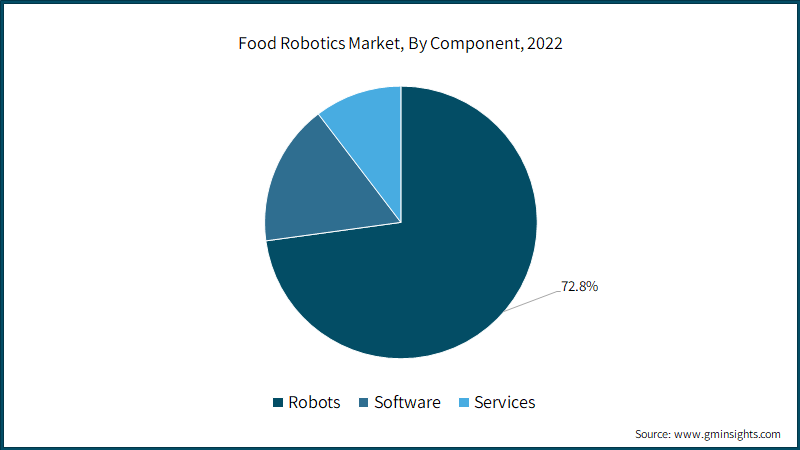Home > Semiconductors & Electronics > Automation > Robotics > Food Robotics Market
Food Robotics Market Analysis
- Report ID: GMI6929
- Published Date: Oct 2023
- Report Format: PDF
Food Robotics Market Analysis
Based on robots, the market is segmented into articulated, cartesian, SCARA, parallel, cylindrical, collaborative, and others. The SCARA segment is estimated to grow significantly over the forecast period and account for a revenue of over USD 1.5 billion by 2032.
- Selective Compliance Articulated Robot Arms (SCARA): These robots have gained prominence in the food industry for their unique capabilities. SCARA robots are known for their exceptional speed & accuracy in tasks such as pick & place, sorting, and packaging.
- In the food robotics market, SCARA robots are often employed in tasks such as the placing toppings on pizzas, arranging confectionery products, and handling delicate bakery items. Their ability to work quickly and consistently makes them ideal for use in high-speed production lines.
- SCARA robots enhance productivity, reduce production costs, and ensure precise food item placement, thereby meeting the industry demand for efficiency & quality.

Based on component, the market is segmented into robots, software, and services. The robots segment accounted for a dominant market share of over 70% in 2022 and is anticipated to grow over the forecast period.
- Stringent food safety and quality regulations are driving the adoption of food robots. The food industry is subject to rigorous standards to ensure consumer safety and product quality. Robotics technology can achieve compliance by minimizing human contact with food items and reducing the risk of contamination.
- Robots equipped with sensors and vision systems can detect anomalies and foreign particles, ensuring that food products meet the highest standards, which is crucial for both consumer trust and regulatory compliance.
- Consumers are increasingly seeking customized and personalized food options, leading to the adoption of food robotics solutions. Robots can be programmed to create tailored dishes and food items, thereby catering to individual preferences and dietary requirements.

North America dominated the global food robotics market in 2022, accounting for a significant share of over 32%. The region's food industry is characterized by innovations and the high demand for automation. Factors, such as labor costs, food safety regulations, and the need for consistent product quality, are driving the adoption of food robotics. In the U.S., food manufacturers, restaurants, and quick-service chains are increasingly integrating robots into their operations. The presence of prominent food robotics companies and research institutions is also contributing to market growth in North America.

